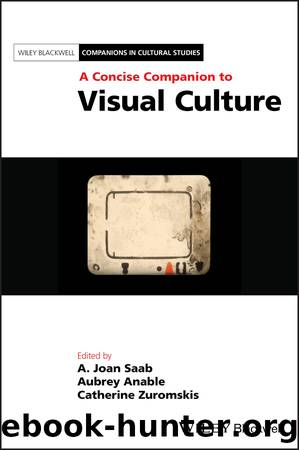A Concise Companion to Visual Culture by A. Joan Saab;Aubrey Anable;Catherine Zuromskis; & Aubrey Anable & Catherine Zuromskis

Author:A. Joan Saab;Aubrey Anable;Catherine Zuromskis; & Aubrey Anable & Catherine Zuromskis [Неизв.]
Language: eng
Format: epub
ISBN: 9781119415473
Publisher: John Wiley & Sons, Inc.
Published: 2020-12-29T00:00:00+00:00
2
In his coverage of the US invasion and occupation of Afghanistan, Hetherington continued to reflect on the problem that motivated him to travel with LURD: what makes men kill? Immersive reporting enabled the sustained attention, cumulative knowledge, and emotional connection that Hetherington valued in his reporting. In Afghanistan, this method was sanctioned by the US militaryâs official policy, inaugurated in 2003, of embedding reporters with military units. Military embedding restricts the reporterâs gaze, in a âconcerted effort on the part of the state to regulate the visual field,â as Butler (2010, 64) puts it, and at the same time deepens that gaze through the reporterâs intimacy with his or her subjects.
Photojournalists have often contended with stateâimposed constraints on what they can witness. As David Campbell observes, the âconventions of war photojournalism have been frequently aligned with the state,â and thus âthe frames through which the visualization of Afghanistan is enactedâ are not without precedent (Campbell 2017, 29). The practice of embedding is not identical, however, with its military applications, but belongs at once to a history of military censorship and to a tradition of immersive reportage. When we consider Hetheringtonâs photographs from Restrepo in relation to his work in West Africa, we can see that military embedding and immersive reporting are inimical in some respects. Immersion typically deepens and widens the gaze of the observer. Hetheringtonâs Long Story is a case in point, as its rendering of Liberian society is both intricate and expansive. Military embedding, by contrast, trades breadth in exchange for access and thus deepens and narrows the reporterâs perspective. In the case of Hetheringtonâs embed with the US military, this narrow gaze enabled a rich and unconventional portrait of American soldiers while ensuring that other peopleâAfghani civilians and combatants as well as female journalistsâall but disappear from the scene of war.
Hetheringtonâs portraits from the Milton Margai School belong to a sentimental tradition in that they use fond emotionâin this case, the reporterâs attachment to his subjectsâto bridge the divide between blindness and sight, childhood and adulthood, the black subject and the white observer. At Restrepo, Hetherington continued to combine the techniques of immersive reporting with sentimental modes of expression: his portraits of sleeping soldiers surely recall the domestic sentimentality of the postmortem photograph and at the same time affirm an eroticized male camaraderieâor brotherhoodâthat is the stuff of sentimental nationalism. At Restrepo, Hetherington explored the gendered significance of immersive practice as he toggled between a rhetoric of sentimental motherhood and a romance of masculine fraternityâboth of which regard war through the lens of deep emotion.
On their first visit to the Korengal Valley, Hetherington and Junger were surprised by the intensity of the fighting there, and Hetheringtonâs initial photographs were, in his words, âvery action oriented. Photojournalism. Reminiscent of classical war photography ⦠because I wanted people to see that there was a lot of fighting going onâ (Kamber 2010). But on returning to Restrepo he found that âfighting sort of bored me.â He became interested, increasingly, in
Download
This site does not store any files on its server. We only index and link to content provided by other sites. Please contact the content providers to delete copyright contents if any and email us, we'll remove relevant links or contents immediately.
The Japanese by Christopher Harding(1017)
Watercolor With Me in the Forest by Dana Fox(716)
A Theory of Narrative Drawing by Simon Grennan(703)
The Story of the Scrolls by The Story of the Scrolls; the M(693)
Glittering Images: A Journey Through Art From Egypt to Star Wars by Camille Paglia(613)
Boris Johnson by Tom Bower(587)
The Art and Science of Drawing by Brent Eviston(563)
This Is Modern Art by Kevin Coval(561)
Frida Kahlo by Frida Kahlo & Hayden Herrera(551)
AP Art History by John B. Nici(537)
Banksy by Will Ellsworth-Jones(530)
War Paint by Woodhead Lindy(518)
Van Gogh by Gregory White Smith(514)
Scenes From a Revolution by Mark Harris(510)
Draw More Furries by Jared Hodges(508)
Ecstasy by Eisner.;(501)
About Looking by John Berger(496)
100 Greatest Country Artists by Hal Leonard Corp(494)
Young Rembrandt: A Biography by Onno Blom(484)
